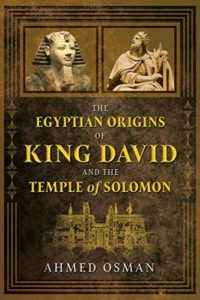
An investigation into the real historical figure of King David and the real location of the Temple of Solomon
• Identifies King David as Pharaoh Tuthmosis III of the 18th Dynasty and David’s son Solomon as Pharaoh Amenhotep, Tuthmosis’s successor
• Shows how the Temple of Solomon described in the Bible corresponds with the Mortuary Temple of Luxor in Egypt
• Explains how David was not a descendant of Isaac but his father and how biblical narrators changed the original story of Abraham and Isaac to hide his Egyptian identity
During the last two centuries, thousands of ancient documents from different sites in the Middle East have been uncovered. However, no archaeological discovery speaks of King David or Solomon, his son and successor, directly or in directly. Was King David a real person or a legend like King Arthur? Proposing that David was a genuine historical figure, Ahmed Osman explores how his identity may be radically different than what is described in religious texts.
Drawing on recent archaeological, historical, and biblical evidence from Egypt, Osman shows that David lived in Thebes, Egypt, rather than Jerusalem; that he lived five centuries earlier than previously thought, during the 15th rather than the 10th century B.C.; and that David was not a descendant of Isaac but was, in fact, Isaac’s father. The author also reveals David’s true Egyptian identity: Pharaoh Tuthmosis III of the 18th Dynasty.
Confirming evidence from rabbinic literature that indicates Isaac was not Abraham’s son, despite the version provided in Genesis, Osman demonstrates how biblical narrators replaced David with Abraham the Hebrew to hide the Egyptian identity of Isaac’s father. He shows how Egyptian historical and archaeological sources depict figures that match David’s and Solomon’s known characteristics in many ways, including accounts of a great empire between the Euphrates and the Nile that corresponds with David’s empire as described in the Bible. Extending his research further, the author shows that King Solomon, King David’s son, corresponds in reality to Pharaoh Amenhotep, successor of Tuthmosis III, the pharaoh who stands out in the dynastic history of Egypt not only for his peaceful reign but also as the builder of the Temple of Luxor and the famed Mortuary Temple at Luxor, which matches the biblical descriptions of Solomon’s Temple.
Unveiling the real history behind the biblical story of King David, Osman reveals that the great ancestor of the Israelites was, in fact, Egyptian.
